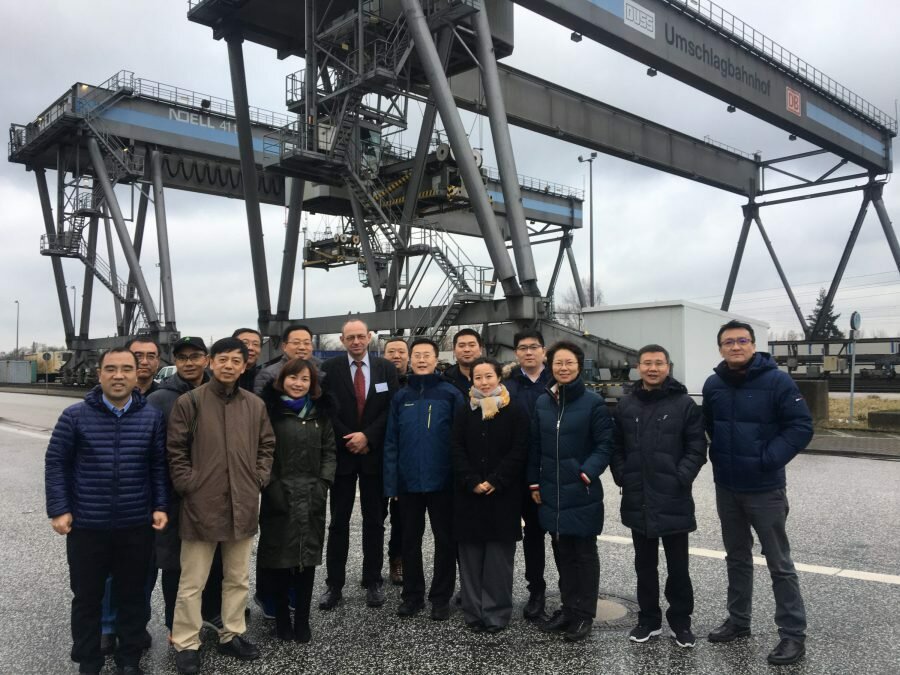Intermodal freight transport (combined transport) is one pillar of the shift approach within climate action strategies to make freight transport and logistics greener and more sustainable, thus effectively meet the targets of the Paris Agreement. Using combined transport means shifting road freight transport to more CO2 efficient modes such as rail or waterborne transport and therefore significantly reduces CO2 emissions and the energy consumption per loading unit. With growing freight volumes – not only in China but also in Germany and many other economies around the globe – and the shift away from large-scale bulk goods towards the small-scale cargo of higher value goods, all stakeholders in the logistics chain are challenged to optimize their operation and resource allocation to provide a sustainable and competitive service. To promote intermodal freight transport especially policy makers, infrastructure providers and managers, railway undertakings, combined transport operators, terminal operators as well as road haulage…
The transport sector is responsible for a great share of energy consumption, which directly correlates with the emission of polluting greenhouse gases (GHG) and therefore indirectly with climate change. Within this scope, road freight transportation accounts for the largest share of total GHG emissions from transport. In Europe, in 2010, transport sector was responsible for 33 % of final energy consumption and 26 % of greenhouse gas emissions. Correlating, road transportation accounted for 72 % of total GHG emissions from transport. In China, in 2013, 14.19 million commercial road freight vehicles carried a total volume of 30.7 billion tonnes of freight with a turnover volume of 55.7 trillion ton kilometres. All of these figures grew with annual rates of over 10 % in the last years in China. Projections suggest that due to the development in e-commerce and globalisation road freight transport will increase significantly in the next few years. As a consequence of…
Last week the “China Green Freight Initiative International Seminar” organised by the China Road Transport Association (CRTA) took place in Beijing. The China Green Freight Initiative (CGFI) was launched in April 2012 as a national programme to improve fuel efficiency and reduce CO2 and air pollutant emissions from road freight transport in China. Overall aims are to adopt cleaner technologies and smarter freight management practices. GIZ works with the Chinese Ministry of Transport on low carbon freight transport. Within this context, GIZ supports the CGFI and participated in the annual seminar with other renowned international speakers such as Jim Blubaugh, Director International Programs Office of Transportation and Air Quality United States Environmental Protection Agency, and his colleague Buddy Polovick, SmartWay Transport Partnership. For more information please take a look at the agenda: “CGFI Seminar 2014 Agenda” The GIZ China “Green Logistics in China” project contributed to the seminar with two presentations.…
Within the past decade demand for freight and logistic services around Asia has been on a continuous rise. Driven by increasing economic growth and Asia’s ever rising importance as global production hub, this trend does not seem to slow down. This development positively contributes to local and regional economies as well as helps to alleviate poverty in the region. However, this trend also implicates negative side effects. Within the transport sector, freight and logistic services in many Asian countries account for up to 40% of total energy use and contribute equally to local air pollution and greenhouse gas (GHG) emissions. Therefore, a call for greener freight and logistic services in Asia was made and the industry is noticing a rising interest in environmentally sustainable operations. Within this context, the GIZ “Energy Efficiency and Climate Change Mitigation in the Land Transport Sector in the ASEAN Region” project and the Asian Development…
The GIZ Green Logistics project advises Chinese partners such as the Ministry of Transport (MoT) in the field of carbon foot printing in logistics. The project contributes to capacity development of decision makers and the introduction of new concepts and standards. Within this context the DSLV guide was translated into Chinese to outline the European approach to local partners and to provide a resource document. Manage carbon emissions from logistics is a complex task and a major challenge for reducing energy consumption of the freight transport industry. The European Committee for Standardization (CEN) approached this problem by introducing the CEN standard EN 16258, “Methodology for Calculation and Declaration of Energy Consumption and GHG Emissions of Transport Services (freight and passengers)” at the beginning of 2013 to quantify the environmental foot print of logistic activities. The standard provides a common methodology for the calculation, declaration and reporting on energy use and…
